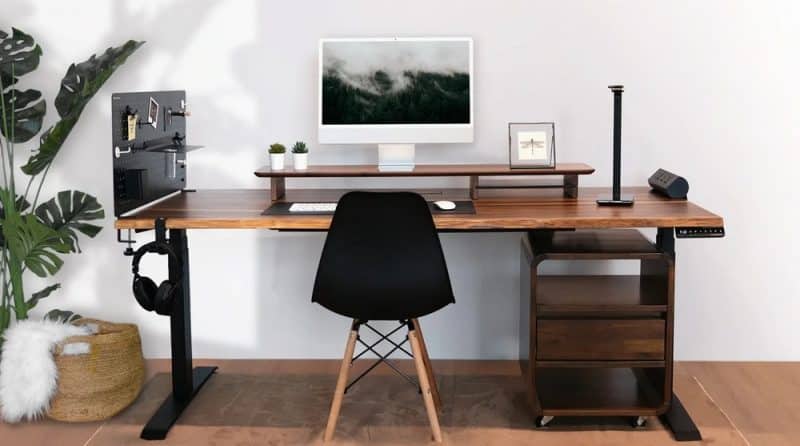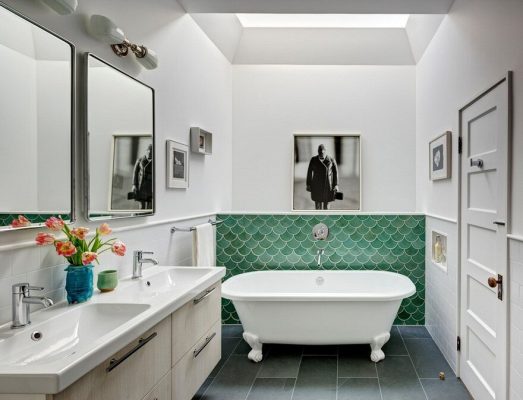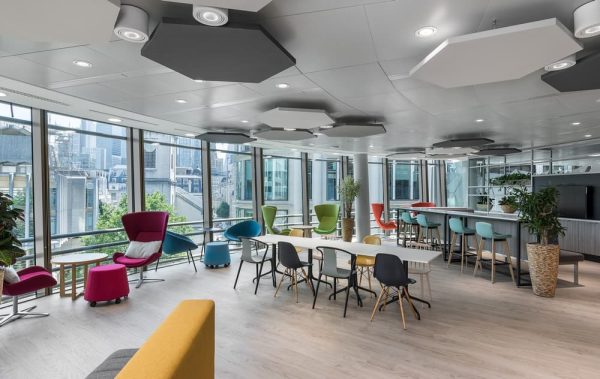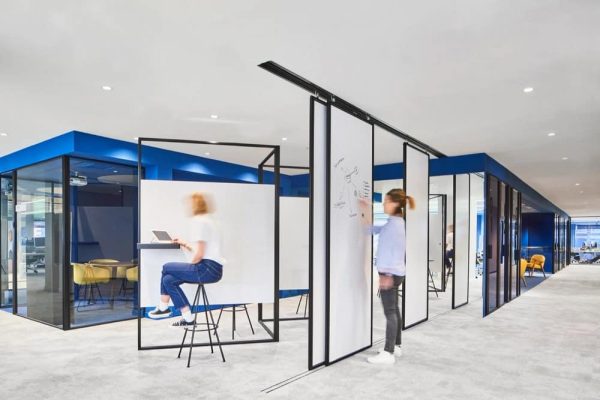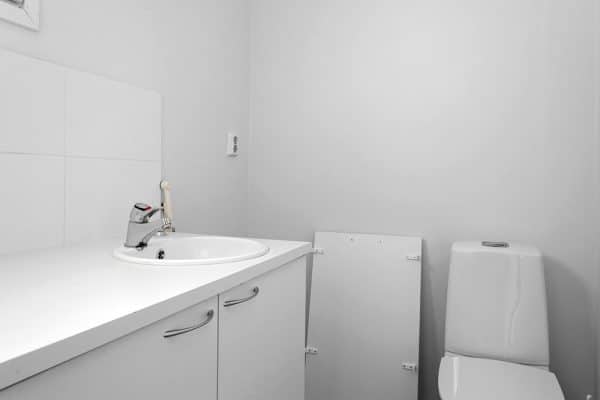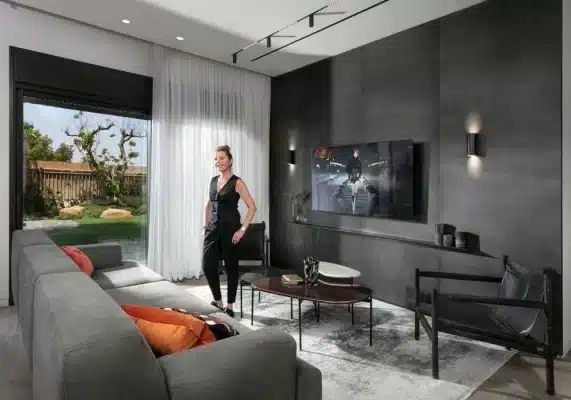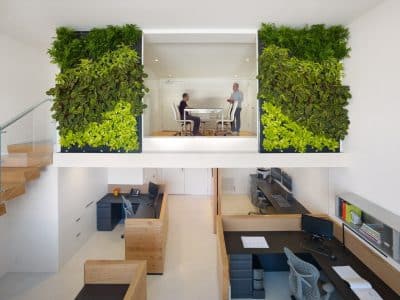
Whether you have a small nook dedicated to staying at home as a business owner, or you use it as the remote workspace for your job, you deserve more than just a metal desk and an extra chair tucked into a spare corner. Why? Because a home office needs to be well-designed and as relaxing as the rest of your home. It should be a place where you are inspired to pull an all-nighter, comfortably and productively. Read on to find home office design tips that elevate your work-from-home experience.
Space Planning for Your Home Office
Effective space planning is essential when decorating your ideal office. It helps in arranging your home office in a way that optimizes workflow and space utilization. This strategy allows you to consider the positioning of windows and how they affect the lighting throughout the day, ensuring that your computer is not placed in a position where screen visibility becomes a challenge in the evening.
Ensure you allocate ample space to work comfortably. Consider whether you’ll be able to move freely from side to side, and effortlessly stand up and sit back at your desk. This thoughtful planning not only enhances your comfort but also boosts your productivity by facilitating easier movement and reducing physical strain throughout your workday.
Smart Storage to Get Organized
- Use Vertical and Horizontal Storage Solutions: The only way to avoid the chaos that comes from a lack of organization is to have an organized home office. No one can work efficiently in an environment that is disordered and unorganized. Therefore, do not let limitations in your imagination limit your storage solutions. Incorporate shelving and cabinetry using both vertical and horizontal orientation to improve your office organization.
- Utilize Floating Shelves: Floating shelves are quickly becoming a popular choice for those looking for a quick solution to decorate their spaces. The compact dimensions and hidden mounts of the shelves are a great way of giving your home office a smooth appearance without drawing attention to any brackets. This is a terrific way to use space that usually is left unused.
- Opt for Movable Storage: Make movable storage your best friend; it will help you keep your office tidy. Put the cabinets on castors to make them conveniently relocatable when they are not in use. A wide and clear office space motivates creativity and increases your productivity.
- Label Everything: Ensure that every item is labelled. The aesthetic design of boxes and drawers gives you the ability to see what’s inside each one, so you can quickly and easily find what you need. It brings order to the house as items are returned to the right places, preventing clutter.
Workplace Ergonomics
Ergonomics is critical in any workspace to prevent back pain and other physical issues associated with prolonged periods of sitting.
- Proper Chair: Choose an ergonomic chair that supports the natural curve of your spine, with adjustable features for height, backrest, and armrests to ensure maximum comfort.
- Desk Height: The height of your desk should allow you to rest your arms comfortably, without having to raise your shoulders, which can lead to tension and discomfort.
- Monitor Position: Set your monitor at eye level or slightly below to prevent neck strain, ensuring that you can view your screen comfortably without tilting your head up or down.
- Support Accessories: Incorporate footrests or lumbar support pillows to enhance posture and comfort, making long hours at your desk easier on your body.
Optimal Lighting
Proper lighting is crucial for creating an environment that enhances both productivity and eye health. Here’s how you can optimize the lighting in your home office:
- Natural Light: Harness the power of natural light by positioning your desk near a window. This not only saves on energy costs during the day but also provides a dynamic, natural environment that can boost your mood and productivity. Use adjustable blinds or sheer curtains to control the intensity and reduce glare without darkening your space completely.
- Task Lighting: Incorporate focused task lighting to aid specific activities like reading or writing. Desk lamps with adjustable arms allow you to direct light exactly where you need it, preventing eye strain during detailed tasks.
- Ambient Lighting: Supplement natural and task lighting with ambient lighting to fill in the shadows and reduce contrast in your workspace. A ceiling lamp or floor lamps with a soft glow can help maintain a steady level of light, reducing eye fatigue and creating a more comfortable working environment.
- Adjustable and Smart Lighting Solutions: Consider using smart LED lights that can change color temperature throughout the day. Cooler, bluer lights during the morning can invigorate and help you wake up, while warmer tones in the evening can help you wind down as your day ends.
Get Your Home Office Technology Upgraded
Upgrading the technology in your home office can lead to significant improvements in efficiency and ease of work. Here are several advancements to consider:
- Smart Connectivity: Equip your office with smart devices that can communicate with each other. For example, smart speakers that can take voice commands to control other smart devices, manage tasks, set reminders, or even control lighting and temperature.
- High-Quality Video Conferencing Gear: Invest in a high-definition webcam and a professional microphone setup for clearer video calls and meetings. This can enhance your communication by making interactions more personal and engaging.
- Efficient Printers and Scanners: A reliable, multifunctional printer and scanner can save time and space. Look for devices that offer high-speed printing and scanning, wireless connectivity, and eco-friendly operation.
- Ergonomic Peripherals: Choose keyboards, mice, and even monitor stands that are designed to reduce strain on your hands, wrists, and eyes. Ergonomic products can significantly increase comfort, allowing for longer, more productive work sessions without discomfort.
- Advanced Security Solutions: As home offices often contain sensitive information, investing in robust cybersecurity solutions, including advanced firewalls, antivirus software, and encrypted hardware, is crucial.
Decor and Personalization
Creating a workspace that reflects your personal style and preferences is essential for a pleasant and motivating home office environment.
- Color Psychology: Use color psychology to choose wall colors and accents that help you focus and feel comfortable. For instance, blue hues are known to have calming effects and aid in concentration, while yellows can energize and inspire creativity.
- Functional Decor: Incorporate elements that are not only decorative but also functional. Magnetic boards, cork wall panels, or stylish modular shelving can add character while offering practical storage solutions for notes, pictures, and office supplies.
- Personal Touches: Include items that personalize the space uniquely to your taste, such as artworks, family photos, or collections of items that inspire you, like vintage cameras, plants, or books. These personal touches make your office feel truly your own and can serve as a source of inspiration during long work hours.
- Flexible Furniture: Consider furniture that can be easily rearranged or adjusted. Pieces like adjustable height desks, mobile file cabinets, and modular sofas can change your office layout or functionality according to your current needs, giving you the freedom to keep your workspace fresh and adaptable.
Choose a Unique Scent for Your Home Office
Scent can dramatically affect mood and productivity. Choose a fragrance that enhances your work mood—perhaps a fresh, invigorating citrus for energy, or a soft lavender for stress relief. Use an aromatherapy diffuser, scented candles, or fresh flowers to subtly enhance your workspace.
Break Area
Having a designated relaxation area within your office is essential for mental and physical rejuvenation.
- Relaxation Space: Create a comfortable nook with an armchair or a small couch, ideal for reading, taking breaks, or simply thinking.
- Exercise Equipment: Include simple fitness equipment like a yoga mat or dumbbells to encourage regular movement, which is crucial for maintaining health when working from home.
Conclusion
Your home office should be a blend of functionality, comfort, and personal style. It’s more than just a workplace; it’s part of your home and should reflect your personal preferences and needs. With these home office design tips, you can craft a workspace that not only meets your needs but also enhances your productivity and well-being, making it a place where you are driven to succeed.
